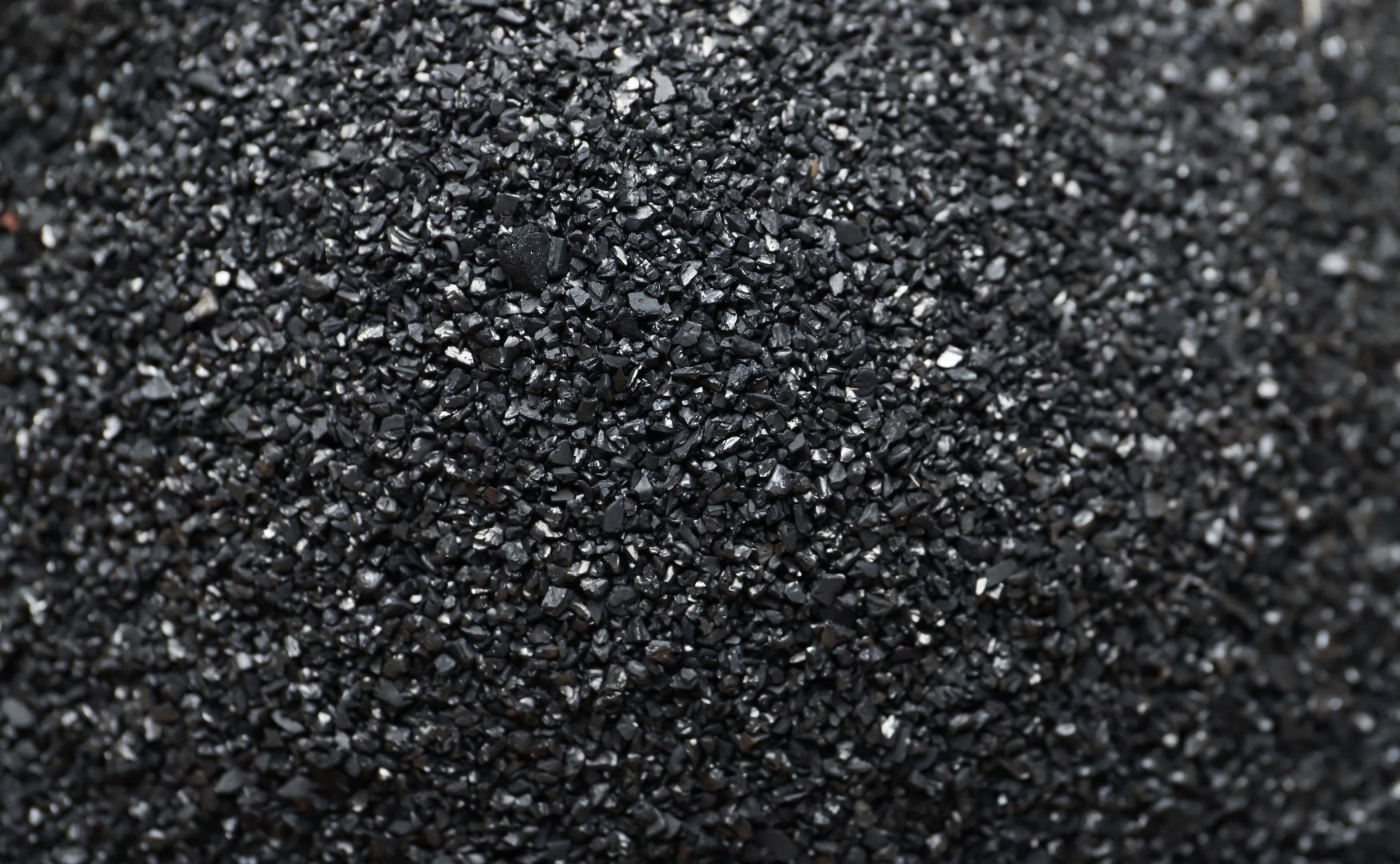Activated carbon is a porous carbon material widely used in industrial water and wastewater treatment to adsorb dissolved organic contaminants, odors and flavors as well as pollutants such as heavy metals and micropollutants. Due to its high internal surface area and excellent adsorption properties, activated carbon is used as a filter medium to remove pollutants from water or air. The use of activated carbon enables the treatment of both industrial and municipal wastewater as well as drinking water treatment.
Table of contents
Technical background
Activated carbon is produced from organic materials such as wood, coal or coconut shells under high temperatures in an oxygen-poor environment. This process leads to the formation of a porous structure with an extremely large specific surface area, which is ideal for the adsorption of pollutants. Adsorption is based on van der Waals forces and the physical attraction between the pollutants and the surface of the activated carbon particles.
There are different types of activated carbon:
- Powdered activated carbon (PAC): This consists of fine carbon particles and is often added to water or wastewater in suspension.
- Granulated activated carbon (GAC): Coarser particles that are used in fixed-bed filters and are characterized by their high mechanical stability and long service life.
How activated carbon works
The adsorption process is the key to how activated carbon works. Pollutants are bound on the surface and in the pores of the activated carbon particles. Activated carbon can remove a variety of contaminants from water, including:
- Organic compounds: Pesticides, solvents and pharmaceuticals are effectively adsorbed.
- Heavy metals: Metals such as mercury, lead or copper can be adsorbed by special types of activated carbon.
- Odors and flavors: Activated carbon is often used to remove odors and changes in taste from drinking water.
- Micropollutants: The smallest amounts of organic pollutants, such as those often found in pharmaceutical or cosmetic residues, are removed by activated carbon.
Application in industrial practice
Activated carbon is used in various industries, including:
- Drinking water treatment: Activated carbon filters are used to remove pesticides, solvents and chlorinated compounds that could affect the taste or odor of the water.
- Waste water treatment: In industrial wastewater treatment, particularly in the chemical and pharmaceutical industries, activated carbon filters are used to remove toxic or poorly degradable organic substances.
- Water recycling: In processes where water is to be reused, activated carbon is used as the final purification stage to remove traces of organic compounds.
ALMA FIL AK - Activated carbon filter from ALMAWATECH
The ALMA FIL AK activated carbon filters from ALMAWATECH GmbH have been specially developed for use in industrial water and wastewater treatment. These filter systems use granulated activated carbon (GAC) to effectively adsorb pollutants and clean the water of organic and inorganic impurities. The ALMA FIL AK filters have a modular design and can be flexibly adapted to the specific requirements of the respective system.

Photo: Our activated carbon filters in GRP tanks(ALMA FIL AK)
Advantages of ALMA FIL AK filters:
- High adsorption capacity: The granulated activated carbon in the ALMA FIL AK filters offers a large surface area that enables a high level of pollutant binding.
- Efficient pollutant removal: The filters are able to remove a wide range of pollutants, including organic compounds, heavy metals, odors and flavors.
- Modular design: The ALMA FIL AK filters have a modular design so that they can be easily integrated into existing water treatment systems.
- Long service life: Thanks to the robust granulate-based activated carbon, the filters have a long service life, which reduces operating costs and minimizes maintenance work.
- Adaptable to different applications: ALMA FIL AK filters can be used in a wide range of industries, from drinking water treatment to industrial wastewater treatment.
Maintenance and regeneration of activated carbon
The service life of an activated carbon filter depends on the load of pollutants. As soon as the activated carbon is saturated and its adsorption capacity is exhausted, it must either be replaced or regenerated. Activated carbon is regenerated by thermal treatment, in which the adsorbed pollutants are burned at high temperatures so that the activated carbon can be reused.
Regeneration processes are cost-efficient and reduce the need for new activated carbon, which offers both economic and environmental benefits.

Photo: Granulated activated carbon
Conclusion
Activated carbon is an indispensable filter medium in water and wastewater treatment. Thanks to its high adsorption capacity and its ability to remove a wide range of pollutants, it is used in numerous industrial applications. ALMA FIL AK filters from ALMAWATECH offer a highly efficient and adaptable solution for the adsorption of pollutants in water and wastewater systems, enabling compliance with strict environmental regulations and the optimization of purification processes.
For further information on our products, please feel free to contact us at any time!







